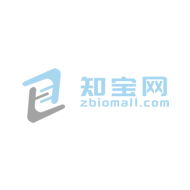- 商品介绍
- 规格参数
- 包装参数
Recombinant human TGF-β1 is used for the cultivation of embryonic stem cells and induced pluripotent stem cells, but can also promote Th17 and Treg differentiation of T cells. The transforming growth factor (TGF) beta 1 is associated with diverse processes including chondrogenesis, wound healing, embryogenesis, proliferation, and apoptosis.
Human TGF-β1 can be used for a variety of applications, including:
- In vitro differentiation of naive CD4+ T cells towards Th17 cells.
- In vitro generation of FoxP3+ inducible regulatory T cells (iTregs).
- Embryonic stem cell differentiation models, for example, for vasculogenesis and angiogenesis.
- In vitro chondrogenesis of mesenchymal progenitor cells and redifferentiation of expanded chondrocytes.
Biological activity
Transforming growth factor β1 (TGF-β1) belongs to a family of homologous, disulfide-linked, homodimeric proteins. These highly pleiotropic cytokines inhibit proliferation of most cells but can promote the growth of mesenchymal cells and enhance extracellular matrix formation. The pivotal function of TGF-β1 in the immune system is to mediate immunosuppression and maintain tolerance by regulating lymphocyte proliferation, differentiation, and survival. In addition, TGF-β1 controls inflammatory responses through chemotactic attraction and activation of inflammatory cells and fibroblasts. TGF-β1 is produced by many cell types but is reported to be most abundant in mammalian platelets and bone. All three TGF-β members are synthesized as a homodimeric precursor of 390 residues, which is intracellularly processed by proteolysis into a 112 aa form. The resulting N-terminal latency associated peptide (LAP) remains non-covalently associated with the TGF-β dimer, and the complex binds to another protein called latent TGF-β-binding protein (LTBP), forming a larger complex called Large Latent Complex (LLC). The LLC is secreted into the extracellular matrix, and prevents the binding of TGF-β to its specific cell surface receptor. Several extracellular factors such as matrix metalloproteases, low pH, reactive oxygen species and thrombospondin-1 can induce release of the active mature TGF-β dimer from the inactive complex. This sophisticated mechanism of activation is important for a fine-tuning of TGF-β signaling. Human TGF-β1 is a recombinant homodimer corresponding to the fully mature form of TGF-β1 without LAP. The amino acid sequence of human TGF-β1 shares 99% identity with TGF-β1 from mouse and rat, therefore human TGF-β1 is commonly used also for mouse cell culture.
Premium-grade cytokines offer the convenience of high and well-defined biological activities and allow exact unit dosing for demanding applications. The biological activity is determined after lyophilization and reconstitution, and normalized to WHO/NIBSC standards whenever available. In general, endotoxin levels are <0.01 ng/μg (<0.1 EU/μg), and purities are >97%. Lot-specific activities are stated in the Certificate of Analysis (www.miltenyibiotec.com/certificates).
| 长度(mm) | |
| 宽度(mm) | |
| 高度(mm) | |
| 重量(kg) |





























 微信小程序
7X24小时在线咨询
微信小程序
7X24小时在线咨询